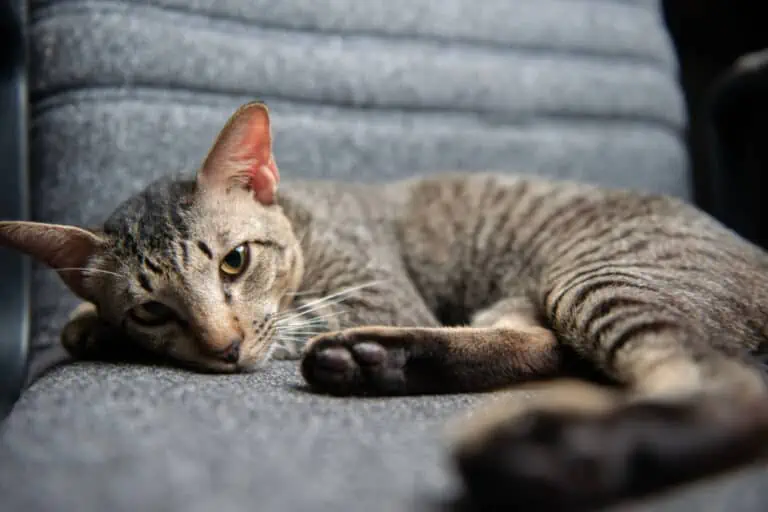-
Shop By Age
-
Kitten
Up to 1 year
-
Adult
1-6 years

What are the signs that your cat needs a friend?
You’ve got a friend in me. You’ve got a friend in me! We all need a trusty companion we can lean on from time to time. And our cats are no different, even though they can often appear ignorant and independent.
01/03/2024
You’ve got a friend in me. You’ve got a friend in me!
We all need a trusty companion we can lean on from time to time.
And our cats are no different, even though they can often appear ignorant and independent.
Our whiskered fur-balls are generally besotted with their human housemates.
However, when it comes to playtime, they might seek the friendship of a fellow feline.
Here are a few triggers to help pet parents identify when their purrer might want a pal.

7 signs that your cat wants another cat
- Clinginess. Is your kitty giving you a bit more attention than usual? Is it refusing to leave you alone, acting as your shadow, and following every footstep? If they’re craving more and more attention, and their meows are becoming excessive, then it might be a sign that they’re desperate for an alternative form of social interaction.
- Appetite. A change in your cat’s feeding habits could denote a craving for kitty companionship. Overfeeding could be illustrative of boredom and a need for social stimulation whilst a lack of appetite could be indicative of depression and/or loneliness.
- Appearance. If your normally proud and pristine-looking pet is beginning to resemble a feline that has been dragged through a hedge backwards, then this could be a tell-tale sign of distress. At the opposite end of the spectrum, overgrooming to prevent an unkempt appearance could also be a cry for companionship.
- Behaviour. Rebellious and destructive episodes; scratching at your favourite pieces of furniture in your absence, knocking over plants and/or ornaments, or ripping rugs/carpets/curtains, can all be signs of boredom. They’re not necessarily hitting out at pet parents, just simply filling their time inquisitively and exploratively.
- Toilet habits. Dirty protests or unusual litter box habits can also be a sign of stress or loneliness. Our kitty-cats are creatures of habit so any form of deviation from their normal behaviour should come as a red flag. Any changes can be shared with your veterinarian.
- Sleep pattern. A shift in a feline’s sleeping habits can indicate loneliness. If a cat chooses to ostracise itself and visit the land of nod to catch 40 winks, rather than interact with their normally favourite human housemate, then it could be a cry for companionship. If you feel this is completely out of the ordinary, have them assessed by a veterinarian to screen out any underlying medical issues.
- Mood/demeanour. Cats aren’t too dissimilar to their pet parents when it comes to displaying signs of boredom and/or loneliness. If they’re experiencing either, and are becoming distressed due to the situation they’re in, then their energy levels might plummet and they’ll become lethargic as a result. It could be a sign that they’re pining for a feline friend to play with.
Is it safe to introduce an older cat to a kitten?
Pet parents need to adopt a sensible and strategic approach to introducing a second kitty-cat to their humble abode.
It’s definitely doable, and the pair of them might end up being purr-fect together, but it isn’t as easy as A, B, C or 1, 2, 3.
This has to be a careful, gradual and patient approach because – as we know all too well – feline’s can be very fiery and territorial.
Yes, they can also be social butterflies, and integrate perfectly well with others, but a cautious approach will help them get off on the right paw.
The same applies for young kitties and older cats, though the latter might have more trouble adjusting to life with a new kitten.
The older they are, the more reclusive they become, and the less likely they are to adapt to changes in their lifestyle.
It can be a stressful situation for all parties, but proper planning and preparation, and creating a calm and hospitable environment, will ensure the introductory period for the new roommates runs a bit more smoothly.
Attempting to match the temperament and energy level between the two – which can sometimes be difficult given the differing stages of life – will also help the two buddies blend better together.
Should I get my cat another cat of the same age?
Some cats, no matter what their age or personality, will always be reluctant to share their kitty living quarters.
Sharing simply isn’t an option for some of our more selfish sidekicks – who would rather have the love and affection of their human housemates for themselves.
The longer your feline flatmate has been established within your home, the less likely they are to accept an adopted sibling.
The same applies to those impetuous and impulsive pets that act in a hostile and intimidating manner towards their compatriots by hissing, growling and marking their territory in their presence.
However, the younger your cat is, and the more closely-matched they are in age to your new addition, the more hope there’ll be for them to become best buddies.
And their character also plays a big part when it comes to accommodating a new member of the family. If your cat is laid back, easy-going, social, enjoys playing in pairs, then a friendship could blossom.
But if they’re timid, anxious, protective and appreciative of their own space, and anti-social, then introducing a new cat into the household could become a problem.
Therefore, pet parents should consider both age and personality when it comes to pairing your kitty with a feline friend.
Never force the issue
Slow and steady wins the race when it comes to integrating a second cat into your household.
No matter how lonely, depressed or bored your four-legged fur-baby might seem, pet parents should avoid forcing felines together too quickly.
If you do commit to introducing a new kitty-cat companion, be sure to keep a close eye on how they’re both behaving.
Should they exhibit behaviour such as hiding, secluding themselves, standing tall with an arched back, puffing up their tail, or hair standing on end, then it is important to intervene to break up this stressful situation.
Welcoming a second pet into your home can be easier said than done, it can take a little bit of time, but pet parents can prevail with patience and perseverance.







